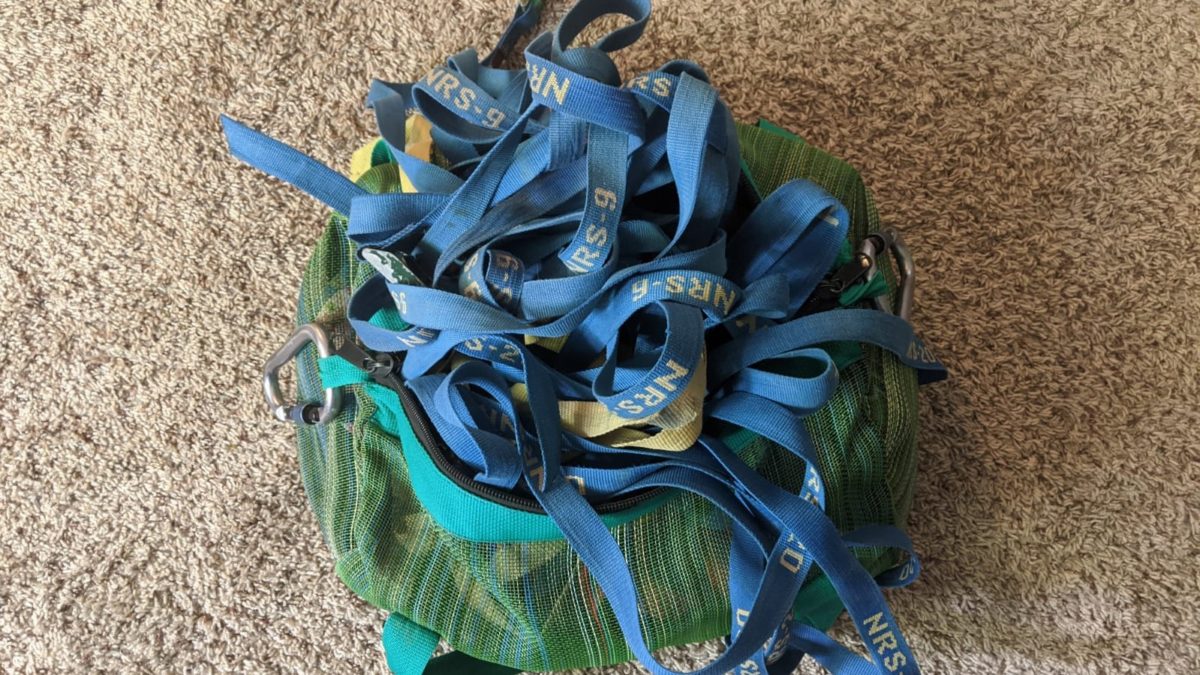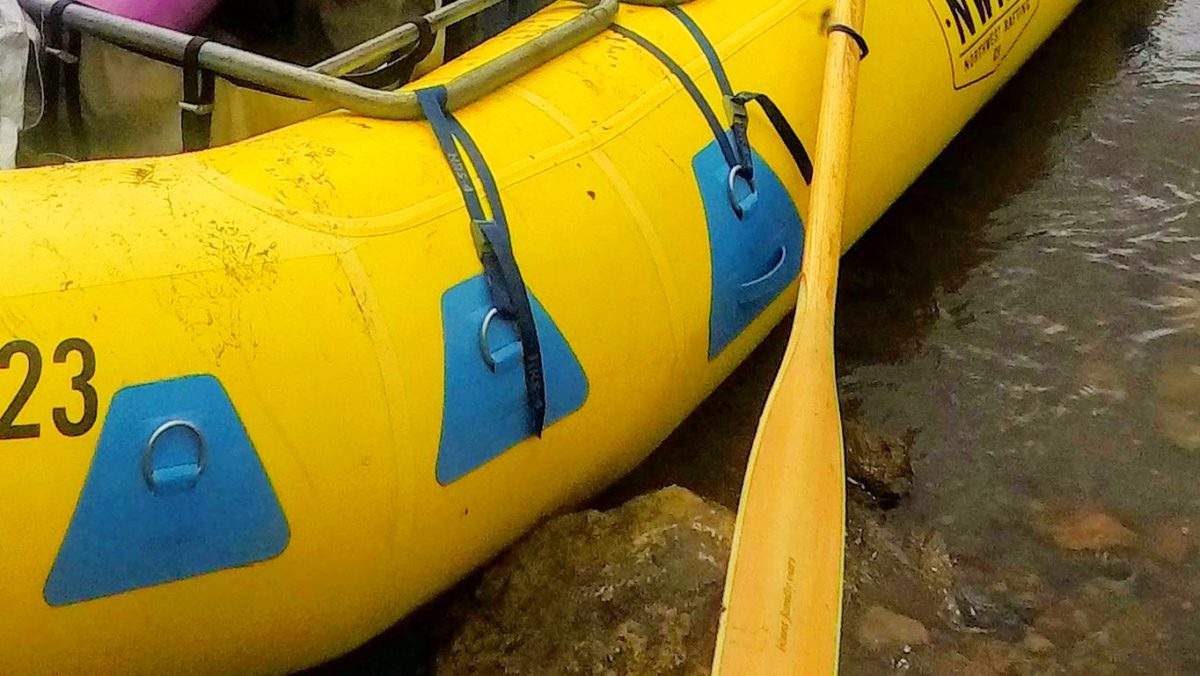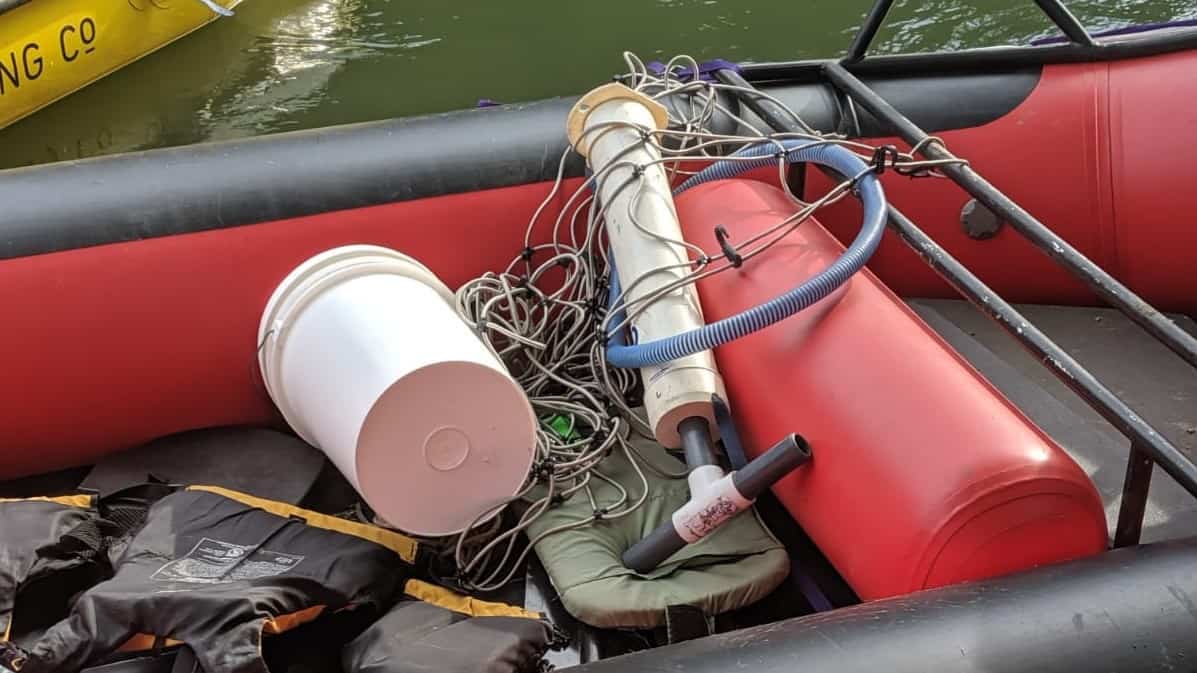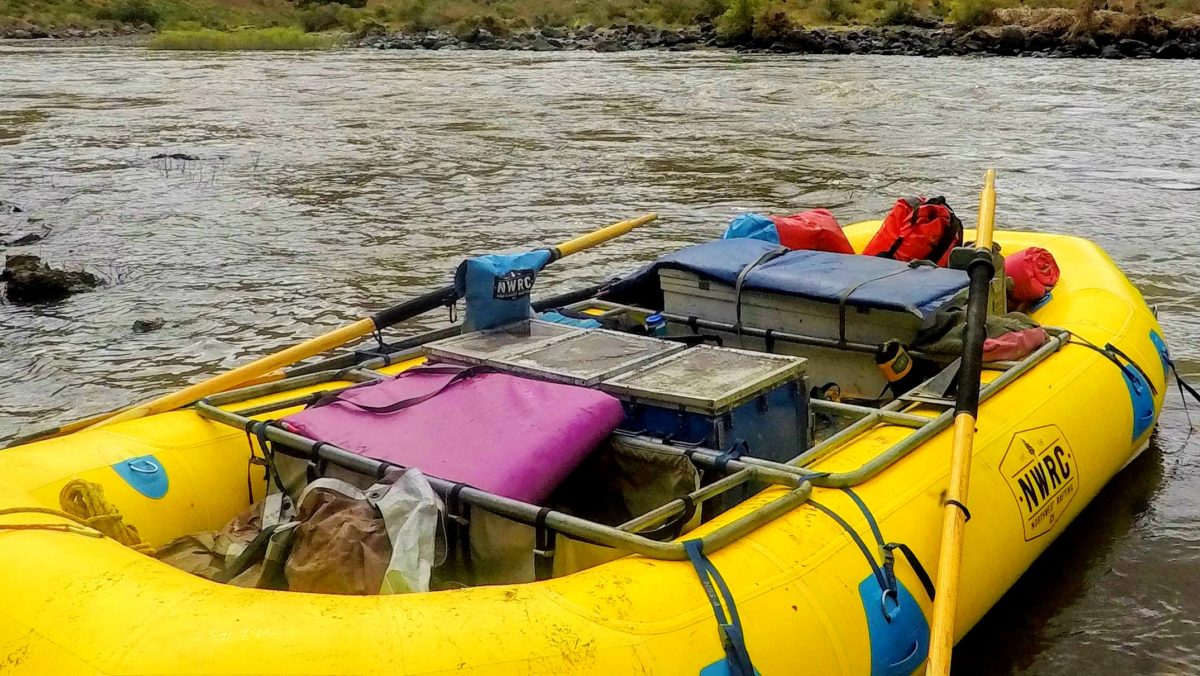Pro Tips: Rigging your Raft
When multi-day guiding, rigging your raft is only one job out of many daily tasks. By the time we get around to loading camp and bags onto our boats, the guests are usually ready and waiting. I still want to make sure my raft is rigged to flip but I do not like making people wait. Finding a balance can be hard. Here are some pro tips to help you rig your raft safely and efficiently.
Keep your straps organized
First, starting organized will make the rest of the process much easier. At the end of a trip, I usually throw all my straps loose in my strap bag creating a huge tangled mess. Before a trip though, I de-tangle and separate my straps to make rigging my raft the next day simpler.
Here are a few ways you can store your straps:
- The roll:
- Daisy chain:
- Keychain method:
With the inside of the strap facing you, take the non buckle end and slide it through the open part of the buckle. Pull a few inches through (more for longer straps). With the tail end of the strap on top, start at the folded end and roll the strap to the buckle. At the buckle, wrap the tail around the whole roll and fasten with the buckle.
Separate straps by length. Hold all straps of one length by tail end and daisy chain. A daisy chain is a continuation of slip knots. When done correctly, simply pull one end and the whole chain comes undone.
Again, separate straps by length. Choose one strap and slide all the other straps of that length onto that strap.
Point buckles in to raft
For ease of tightening straps, make sure the straps are rigged with the buckle end on the outside of the raft. When I am rigging my raft in the morning, I usually double check my frame straps and retighten if they have come loose. I am less likely to fall in the river trying to tighten a strap this way than awkwardly pulling over the water.
Avoid danger ropes
Danger ropes are anything that forms a loop big enough to fit your hand through. If you have a lot of tail left on a strap, try daisy chaining it to avoid creating an entrapment hazard. Also, think about keeping your bow and stern lines in a tight coil to avoid accidentally getting caught. Finally, if you have a perimeter line, keep it taught to avoid sagging.
A commonly overlooked danger rope is your throw bag. A throw bag stored improperly is more dangerous than useful. Make sure that the entire rope is inside a secured bag and free of knots. Keep the loop of rope on the outside of the throw bag small enough that you can not fit your hand through.
Side note: other danger ropes are commonly found on rafters themselves! If you carry a flip line keep it either neatly in your PFD, or if you insist on putting it around your waist, keep it tucked away so it can not get caught.
Watch for tiger traps
I can not tell you the number of times I have been stuck on a rock in the middle of a rapid. Hey, I row heavy rafts on small rivers, it is part of the deal. Anyways, I usually end up running around my raft to shift my weight as my first attempt to get unstuck. Then, if possible, I resort to getting out and pushing my raft. The whole time though, I have to be careful because there are a lot of ways to slip or trip off.
A big potential hazard that I like to call tiger traps are hidden holes. These can be open spaces or spaces slyly covered with a pad or something thin. To avoid these, layer your bags in a way that you could, if needed, step on them. But, also know what is fragile and could be crushed by your weight. Almost more importantly than rigging no tiger traps at all, is remembering the saying “go slow to go fast”. If you know your raft and how it is rigged, you can hopefully remember where the good places to step are if you end up running around your raft.
Set straps for the next day
Finally, the last tip I will leave you with is to set you up for success rigging your raft the next day. When you are unloading your raft at camp, try and keep your long straps attached to the raft. Either keep them on the same d-ring or part of the frame you used that day. Then the next morning, you just have to place the bags and use the strap already in place. This way you eliminate one part of the rigging puzzle.








